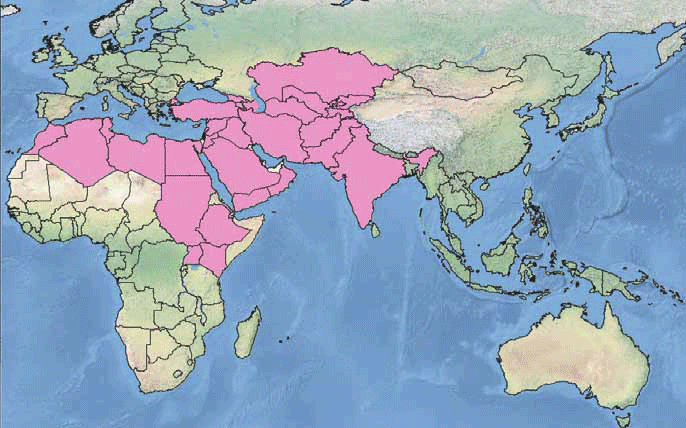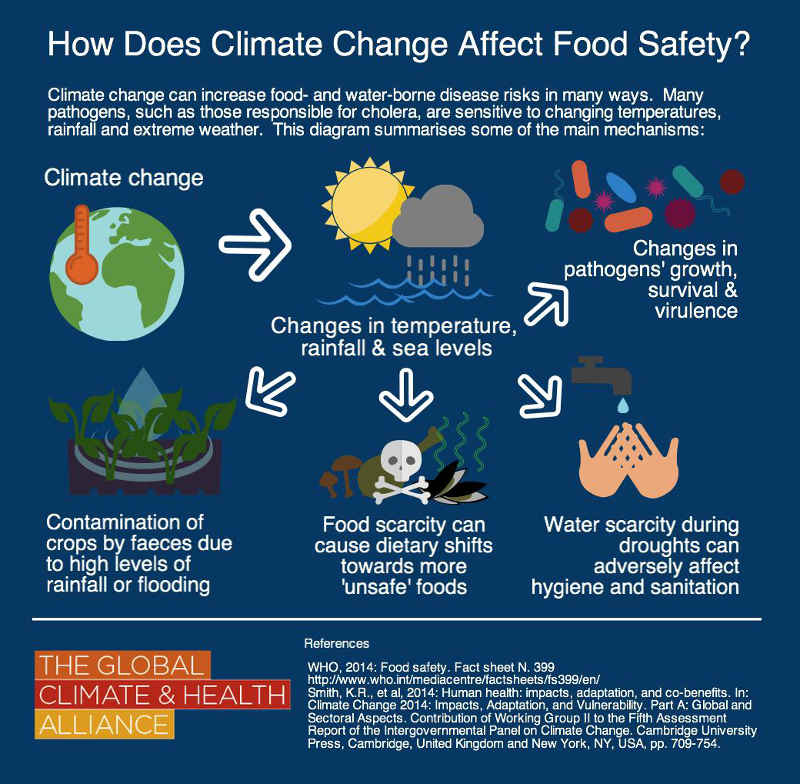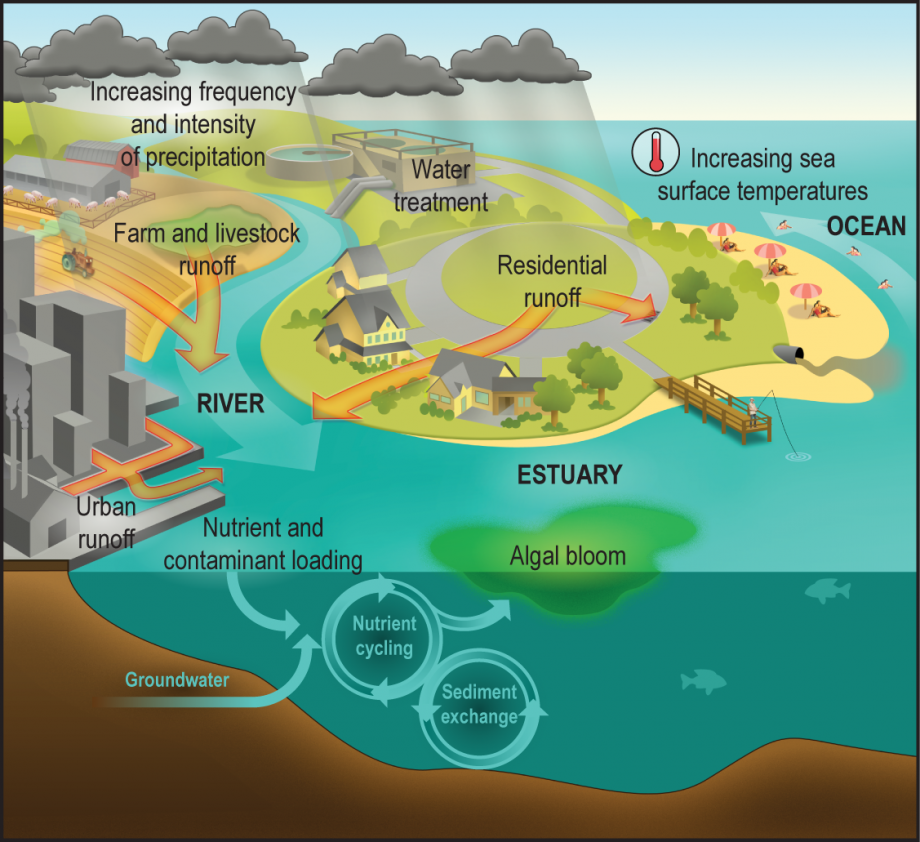Several food-borne pathogens are spreading due to climate change. Depending on the crop type, drought and excess moisture encourage crop pests and spread molds. Climate-driven rusts, blights, and rots are devastating already stressed crops and thereby indirectly affecting human health through decreased food security.

But it's not just our crops falling ill from increased pathogens in a changing climate. Instances of some types of pathogens that make their way to people are also on the rise. The US Global Change Research Program's Climate and Health Assessment from 2016 describes some of these pathways and consequences (and in their bulleted list, they include ample citations to support each bullet point - I'm linking out to that directly in hopes the links there are updated as necessary):
- "Higher temperatures can increase the number of pathogens already present on produce and seafood.
- Bacterial populations can increase during food storage which, depending on time and temperature, can also increase food spoilage rates.
- Sea surface temperature is directly related to seafood exposure to pathogens.
- Precipitation has been identified as a factor in the contamination of irrigation water and produce, which has been linked to food-borne illness outbreaks.
- Extreme weather events like dust storms or flooding can introduce toxins to crops during development.
- Changing environmental conditions and soil properties may result in increases in the incidence of heavy metals in the food supply."

Climate change causes changes in temperature, rainfall and sea levels. This affects the contamination of crops by faeces due to high levels of rainfall or flooding. It can cause food scarcity which can cause dietary shifts towards more ‘unsafe’ foods. It can also cause changes in pathogens’ growth, survival & virulence. Additionally, water scarcity during droughts can adversely affect hygiene and sanitation.
Water-borne diseases are closely related to weather and climate. Cholera, cryptosporidiosis, and several other significant diseases are spread by fecal contamination of water supplies and are often closely associated with floods and heavy downpours. In other cases, drought can concentrate disease pathogens in pools and low flows. Climate change is causing increased intense rainfall events in many parts of the world and drought in others; it is not surprising that water-borne illness is a growing problem in those areas with the most extreme changes. The key to understanding the spread of water-borne illness in a changing climate is exposure. As this image shows, various factors (all from human activity) are increasing our exposure to these illnesses.
- increasing frequency and intensity of precipitation events
- increasing sea surface temperatures
- runoff from agriculture and our built environments

